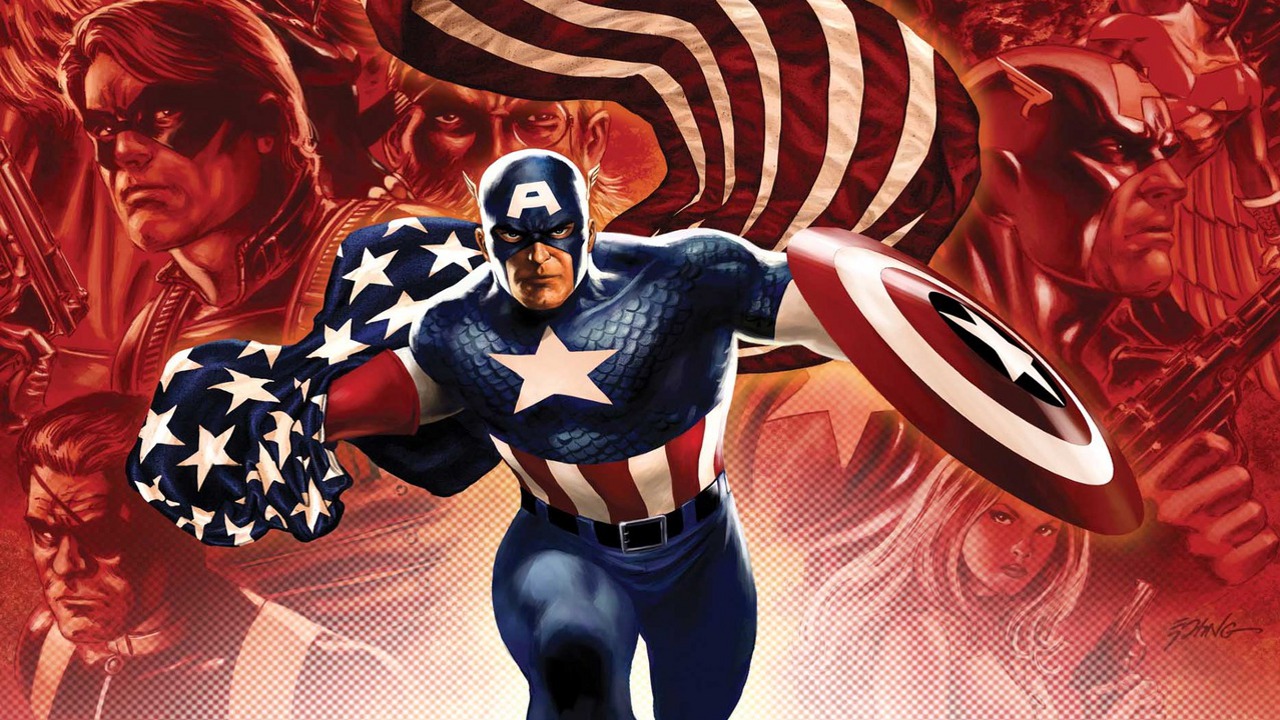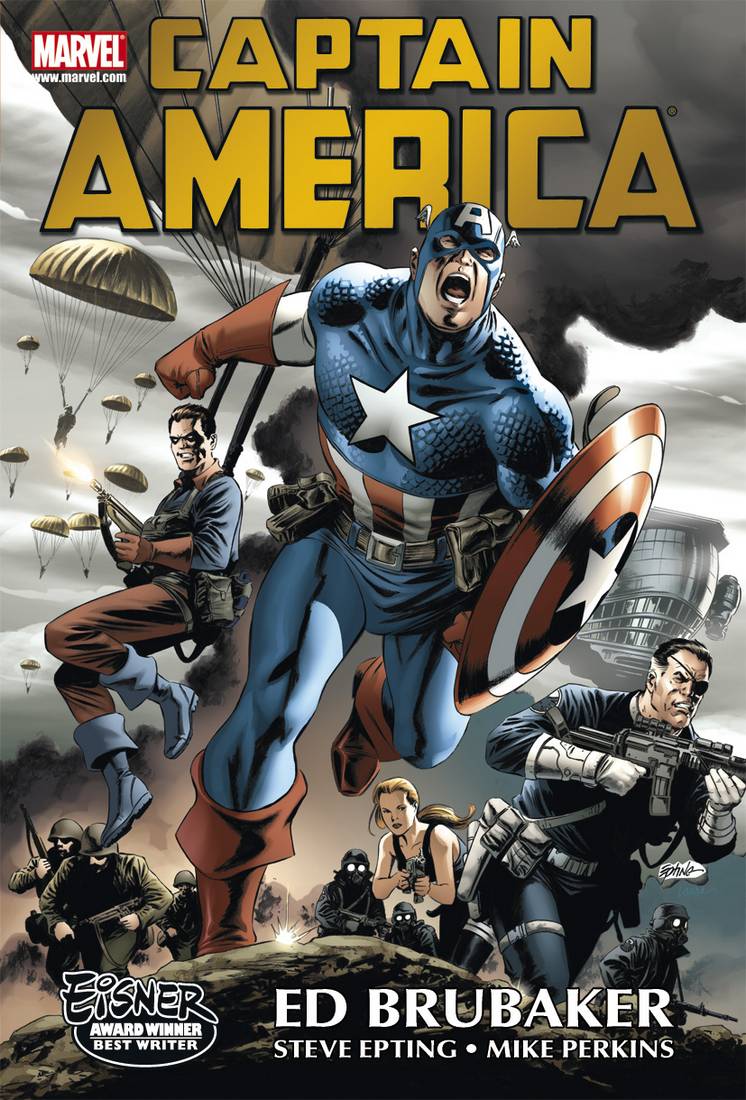Spoilers: The titles alone of some of Marvel Omnibus volumes that I discuss below will give some indication of what happens within each volume.
One of the first comics that I ever owned growing up was a coverless “Captain America” comic that I’m still trying to determine the numbering of – it was vintage 1970s and co-starred The Falcon, Cap’s partner at the time. I’d not been very familiar with Captain America, as the character seemed to fade in popularity throughout the 1970s and 1980s. By the time I was collecting comics on a regular basis in the late-1980s, most of my friends didn’t give “Captain America” a passing glance. He was still a respected member of the Marvel Universe, but he felt over-used and burnt out. In the mid-1990s, I read about Mark Waid’s successful run on “Captain America,” but I was out of collecting at the time and didn’t pay it much attention The comics industry as a whole was bottoming out in those post-speculator days of turmoil.
Fast-forward to summer 2010 and I found myself giving “Captain America” by writer Ed Brubaker a chance. I knew that Brubaker had become one of Marvel’s top writers and massive number of awards that his run had won convinced me to roll the dice on it. Within the first few pages of his initial issue, I was hooked. Right away, Brubaker showed a cinematic flair and keen skill with crafting hooks that kept me turning the pages. The end of each issue, inevitably, meant a harrowing cliffhanger.
I started with the “Captain America Omnibus” (reprinting “Captain America” (vol. 5) #1-25, “Captain America 65th Anniversary Special,” and “Winter Soldier: Winter Kills”). While I’m not a fan of the continued ‘grim and gritty’ trend in comics storytelling, Brubaker manages to remind readers that Captain America was a war hero and that war was often not pretty. The issues in this volume heavily flashback to that war-era, since the main thread of the arc revolves around the return of Cap’s long-dead partner Bucky. Comics fans joked for decades that Bucky was the only comics character to ever stay dead. The joke was on us though, I guess, as that was no longer the case. That said, the return and reinvention of Bucky was inspired. Portions of the story set in the modern world almost had a James Bond-feel to them, with Cap training down clue after clue and Nick Fury with S.H.E.I.D. providing backup support.
The story continued with “Death of Captain America Omnibus” (reprinting “Captain America” (vol. 5) #25-42) , which was the obligatory middle section of Brubaker’s story. Cap’s on-again-off-again girlfriend Sharon Carter played a central role and even his old partner Hawkeye guest-starred. Carter, under the influence of the nefarious Red Skull had shot Captain America dead, so much of the story was about trying to piece together the mystery of the Red Skull’s master plan. In Cap’s place, Bucky took up the iconic shield and tried to be Captain America, to mixed results. In my mind, the most memorable portion of this arc was the pregnancy of Sharon Carter. It was unfortunate that that pregnancy was ultimately nullified due to a miscarriage, as it would have marked another significant change for the title and an interesting new direction for Captain America as a character.
Many of the story arcs that Brubaker began were ultimately resolved in the “Captain America Reborn Omnibus” (reprinting “Captain America” (vol. 5) #43-50, “Captain America” #600-601, and “Captain America: Reborn” #1-6). Given the title of the book, a certain shadow loomed over the story, as one awaited Cap’s return. I wasn’t overwhelmed by how Brubaker brought him back, but it was done skillfully enough. There was a certain satisfaction in seeing the many storylines finally wrap themselves up.
Although Brubaker’s initial multi-year story was finished within these three volumes – and roughly sixty issues – I do hope that Marvel continues to collect Brubaker’s “Captain America” work within their Marvel Omnibus line. The format has proved to be a handy and economical way to read what are some of the most-well-regarded modern mainstream comics put out in the past five years.
- Recapping Criterion’s Lone Wolf & Cub Films - December 29, 2024
- Moonlighting (1985) – A Series Review - September 12, 2024
- San Diego Comic-Con 2024 Analysis - July 31, 2024

